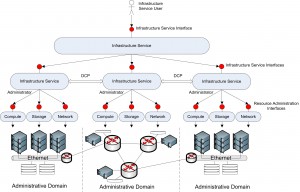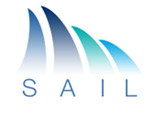For most people, summer means vacation, but this summer in SAIL we did more than enjoying the sun and the beach. Five important documents have been delivered to the EU commission and it is now your turn to enjoy the harvest as we made those documents available on our web site.
During the first phase of the project, we put a large effort on defining the architecture to support the concepts that we introduced in the use cases and scenario document (DA1) earlier this year.
The “Draft Architecture Guidelines and Principles” (DA2) document presents, as it name says it, principles and guidelines applicable to the architecture work being done in SAIL. This includes contributions from the Themes defining objectives, frameworks and early results. The document also includes a simplified view of the SAIL overall architecture, identifying the main interfaces between the work packages.
The architecture for the information centric networking (ICN) approach has been described in “The Network of Information: Architecture and Applications” (DB1). The document presents different design options for the core building blocks of an ICN : naming, name resolution, forwarding and routing, mobility and security. The document studies how the architecture applies to the selected applications and use cases and also describes recent work in NetInf migration and standardisation.
In “Architectural Concepts of Connectivity Services” (DC1), Open Connectivity Services (OConS) proposes a new set of networking architecture principles. It describes the functional entities and interfaces of the architectural framework that suits these new requirements. It then describes the proposed connectivity services and their management mechanisms. Finally, these elements are mapped to the connectivity use cases and scenarios.
Cloud Networking (CloNe) integrates netwo rks and data centers, considers the networking resources into the existing data center infrastructure, and allows the application to use computing and storage resource distributed in the network for a better end-user experience and all this in multi-administrative domain scenarios. The “Cloud Network Architecture Description” (DD1) describes the architecture to support these features from intra and inter-domain perspectives.
rks and data centers, considers the networking resources into the existing data center infrastructure, and allows the application to use computing and storage resource distributed in the network for a better end-user experience and all this in multi-administrative domain scenarios. The “Cloud Network Architecture Description” (DD1) describes the architecture to support these features from intra and inter-domain perspectives.
When introducing new technologies as we do in SAIL, it is not enough to identify the technical issues, we also need to evaluate the impacts on the business and the society. The document “New Business Models and Business Dynamics of the Future Networks” (DA7) studies the intangible, business and regulatory aspects of selected use cases introduced in SAIL.
The architecture work is not yet completed as more deliverables are planned until the end of the project. However, in the coming period, the experimentation and prototyping activities will be more under the focus. A good portion of the next General Meeting in September will be about coordinating the experimentation and prototype activities among the SAIL partners.
You will find the complete list of deliverables from SAIL here.
Enjoy the reading.
Disclosure and disclaimer: I am engaged in SAIL, an ICT project around the Future Internet, on behalf of Ericsson. However the opinions expressed in this post are my personal, and not those of the SAIL project or my employer.







